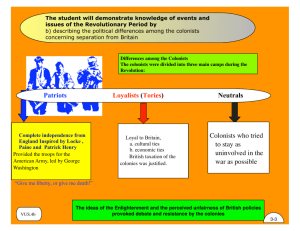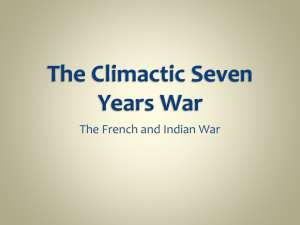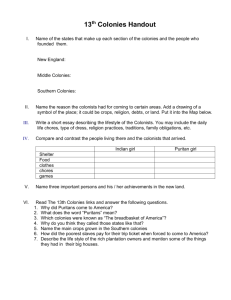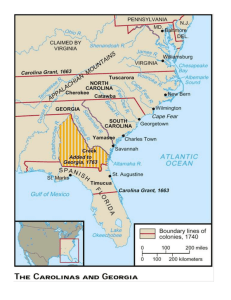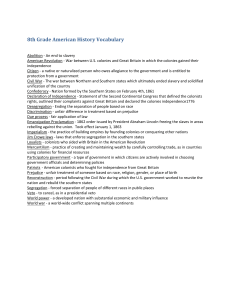Chapter 4
advertisement
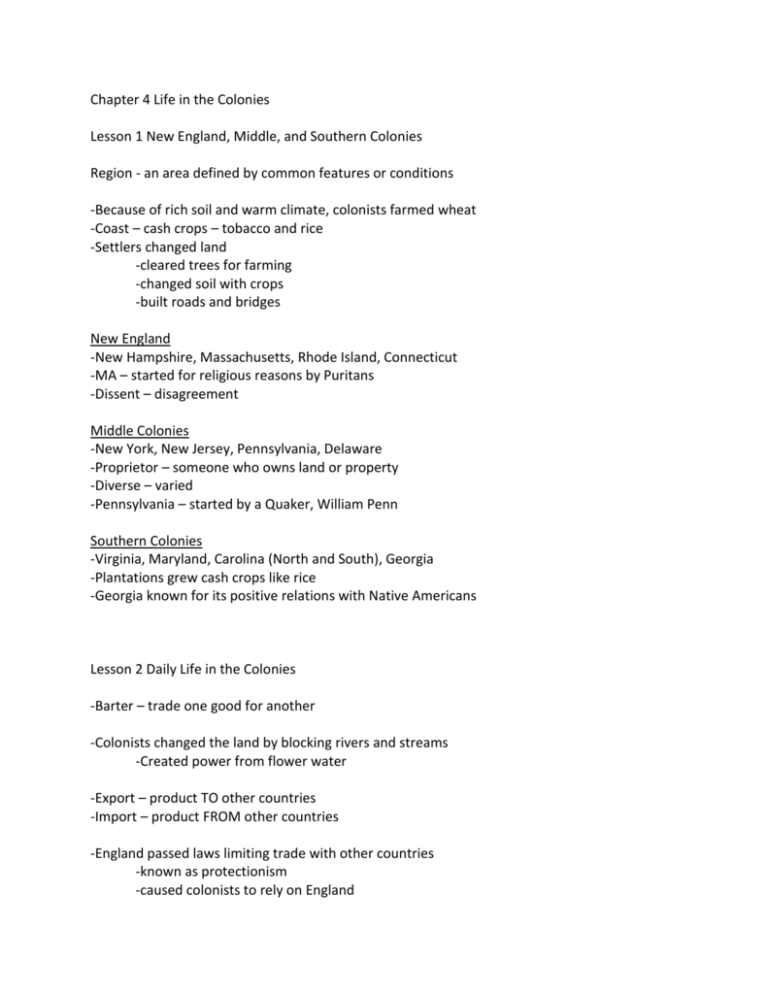
Chapter 4 Life in the Colonies Lesson 1 New England, Middle, and Southern Colonies Region - an area defined by common features or conditions -Because of rich soil and warm climate, colonists farmed wheat -Coast – cash crops – tobacco and rice -Settlers changed land -cleared trees for farming -changed soil with crops -built roads and bridges New England -New Hampshire, Massachusetts, Rhode Island, Connecticut -MA – started for religious reasons by Puritans -Dissent – disagreement Middle Colonies -New York, New Jersey, Pennsylvania, Delaware -Proprietor – someone who owns land or property -Diverse – varied -Pennsylvania – started by a Quaker, William Penn Southern Colonies -Virginia, Maryland, Carolina (North and South), Georgia -Plantations grew cash crops like rice -Georgia known for its positive relations with Native Americans Lesson 2 Daily Life in the Colonies -Barter – trade one good for another -Colonists changed the land by blocking rivers and streams -Created power from flower water -Export – product TO other countries -Import – product FROM other countries -England passed laws limiting trade with other countries -known as protectionism -caused colonists to rely on England -Mercantilism – economic idea that countries benefited when they exported more than they imported Triangular Trade: FROM America England America TO England America Africa PRODUCT Timber, grain, tobacco, rice Tools, tea, clothing, other goods Rum, iron products -Artisans – skilled workers and craftspeople -example – blacksmiths -Classes – society groups based on wealth or importance Colonial Classes: HIGHEST – GENTRY: large land owners, rich merchants, church leaders MIDDLE CLASS: small farmers, village artisans, shopkeepers LOWER CLASS: ordinary workers, servants, apprentices, indentured servants Lesson 3 Slavery in the Colonies -Slavery – system in which people are bought and sold as if they were property -Middle Passage – journey enslaved Africans took from Africa to America -Large southern plantations relied more on slaves than in the north -100’s of slaves per farm -Africans knew about planting and growing rice - became cash crop -Slaves lived together in communities -Words, foods, and music blended with European languages and customs -Fighting back: -Learning to read and write -Encouraging others to break rules -Breaking tools, setting fires, stealing food -Uprising – rebellions Lesson 4 The French and Indian War -King Philip’s War – conflict between Metacom and colonists -Metacom was defeated and many of his people died -The Ohio River Valley west of the Appalachians was claimed by French and British -French destroyed British trading post and built nearby fort -Fort Duquesne -Ally – military partner -N.A. decided to side with British -hoped to keep control of their land -Treaty – formal agreement between countries -British won control of Ohio River Valley -upset N.A. -British built towns and roads, changing the land -Pontiac’s Rebellion – N.A. attacked British forts and villages -Proclamation of 1763 – stopped colonists from settling west of Appalachians -Many colonists ignored this

